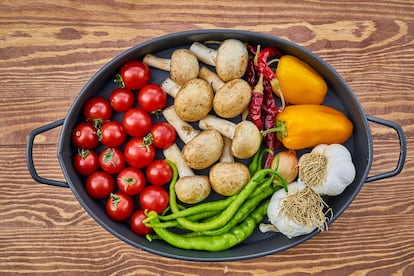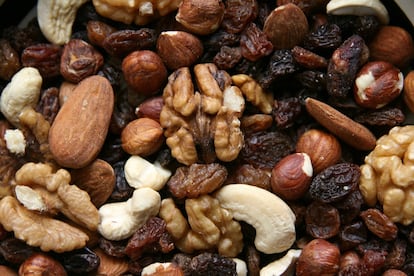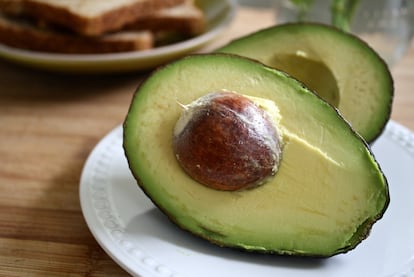Raw veganism isn’t recommended, but offers some delicious recipes
The diet is back in the headlines due to its health challenges after influencer Zhanna D’art’s death

Raw veganism is back in the spotlight after a tragic event: the death of Zhanna Samsonova, known as Zhanna D’art on social media. She passed away in August, apparently succumbing to an infection. Her health had severely deteriorated due to a serious eating disorder. Some news outlets emphasized her 100% plant-based diet, suggesting it was the cause of her death, rather than the underlying illnesses.
Zhanna D’art’s diet was far from being healthy. In her social media posts, she claimed to only consume fruits, juices and no water at all. This restrictive diet was linked to her eating disorder and does not conform to a typical vegan diet. But if she had only consumed cooked ham, the outcome would likely have been similar, and headlines would probably not have pointed to “a traditional diet” as the cause of her death.
Raw veganism
I don’t want to focus on how some media distort veganism or debate its political aspects. Instead, let’s talk about a diet of consuming only raw or dehydrated foods that are “cooked” to a maximum of 107 °F (42 °C), roughly equivalent to the temperature of food left outside in the hot sun. I don’t have facts to back up this raw vegan temperature principle, but it doesn’t seem implausible, and may be even higher considering the last few summers we’ve had.
The most extreme form of a raw vegan diet is the fruitarian or frugivorous diet — eating only fruit — which is what Zhanna D’art followed. It is clear that this option is inherently deficient in the long run. Moreover, it is neither realistic nor recommended as a lifestyle choice. Over time, it will result in a protein deficiency and various other issues. No health professional would endorse following such a diet.
What about a less extreme version? The raw vegan diet includes fruits, vegetables, nuts, seeds, algae, legumes and sprouted grains to aid digestion. Some people follow a partial raw vegan diet (around 75-85%), or eat cooked vegetarian meals at home and restaurants. There’s a lot of flexibility in a vegan diet.

Is it healthier?
Can a raw vegan diet meet the nutritional needs of a healthy adult? Yes, with the addition of a B12 supplement, similar to any vegan. However, it’s important to note that adhering to a long-term raw vegan diet can come with certain challenges.
Meeting energy requirements can be difficult with this voluminous and fiber-rich diet that promotes early satiety. This is especially true for individuals with higher energy needs, such as athletes. To overcome this, it is important to include a daily serving of nuts and incorporate high-calorie foods like avocado, coconut, seeds, olives, dried fruits and dates into your meals. Additionally, energy bars made with dried fruit, dates, coconut, raw cocoa and nuts can serve as a convenient way of increasing energy intake.
Moreover, getting enough protein can be challenging on a vegan diet, particularly if legumes are avoided. Over time, this can lead to lysine deficiencies. To address this, consider incorporating sprouted legumes and seeds, such as pumpkin seeds, which are rich in this essential amino acid. Nuts and sprouted grains can also contribute to protein intake. However, it may require thoughtful planning to consume the recommended daily amounts of protein.
People often demonize fats and minimize their consumption when following this diet. However, this can lead to a deficiency in fat-soluble vitamins and hormonal imbalances, especially in a low-fat raw vegan diet. It can also result in amenorrhea (lack of menstruation) for women who follow the diet long-term due to insufficient energy intake and hormonal disorders. To prevent this, it is important to include nuts, avocado, seeds, olive oil and coconut in the daily diet.

A raw vegan diet offers no health advantages over a standard vegan diet
The commonly held belief that cooked foods lack nutrients and are essentially lifeless is false. In reality, cooked foods retain most of their nutrients and even enhance the availability of many. While some nutrients may be diminished or destroyed through cooking, it is inaccurate to liken cooked foods to sawdust, as some proponents of this baseless theory suggest. Incorporating both raw and cooked foods into our diet allows us to enjoy the benefits of both options, and there is no compelling reason to exclude either.
A study published in 2022 analyzed 16 people who had followed a raw vegan diet for at least 10 years, compared to people with a normal vegan diet and people who also consumed animal products. The study noted that the raw vegan group showed significant resistance to B12 vitamin supplements, which resulted in compromised nutrient levels. The group also exhibited low energy and protein intake, particularly among women, leading to lower values for body mass index (BMI), amenorrhea, and decreased bone density. Surprisingly, most of the parameters analyzed fell within the normal range, although the study results have limitations due to the small sample size.
It’s not for everyone
Previous studies, which also had limited sample sizes or flawed methodologies, yielded similar findings. Experts have recognized for over 20 years that a raw vegan diet often leads to amenorrhea in women and is not advisable over the long term. Additionally, in 2005, concerns were raised about its potential to cause bone loss and vitamin D deficiency. Considering all this, it may not be the best choice for anyone, especially women, to embrace a raw vegan diet.
A raw vegan diet is definitely unsuitable for children. Organizations like the American Dietetic Association explicitly discourage children from following this diet. For kids, meeting their energy needs can be even more challenging because a raw vegan diet is very filling and may be hard to digest due to its volume and fiber content. However, it’s perfectly fine for children to follow a regular vegan diet.
Nutritional concerns aside, the raw vegan diet doesn’t provide any political advantages over veganism. It doesn’t do anything more to combat animal exploitation and even presents more challenges for activists in terms of everyday food choices. Moreover, the public perception of veganism is occasionally associated with idiosyncrasies of minimal or no importance. Therefore, it seems that there are no substantial health, political, or social justifications to opt for this dietary choice.
It’s important to keep in mind that a sudden shift to a strict raw vegan diet may indicate or trigger an eating disorder. This type of diet can be used as an excuse to restrict certain foods and is often marketed as a weight loss or “detox” solution. Many influencers promoting this diet on social media focus on these aspects, which should raise concerns.
Recipes, the best part of raw veganism
We’ve discussed why following this type of diet may not be ideal, but that doesn’t mean we can’t benefit from the creativity and resources of raw veganism in making meals. Our diets already have some raw vegan recipes, like gazpacho and vegetable salads. However, there is a vast world of possibilities to explore that can enhance our menus with more vegetables and nuts.

There are many fascinating raw vegan techniques that can help you create truly wonderful and delicious dishes. If you haven’t explored it yet, you’ll be pleasantly surprised. Search the internet for raw vegan recipes and prepare to be amazed. You’ll discover a wide variety of recipes and ideas to add to your repertoire, such as lasagnas, zoodles (vegetable spaghetti made with carrots or zucchini), nut-based sauces, fruit and nut cakes, vegan cheese boards, seed breads, colorful desserts, flavorful spreads, vegetable ceviche, and many more refreshing options perfect for the summer. By embracing this type of meal preparation, you can not only enjoy great food but also lead a healthier lifestyle and support the fight against animal exploitation. Ignore the clickbait and eat healthy!
Sign up for our weekly newsletter to get more English-language news coverage from EL PAÍS USA Edition
Tu suscripción se está usando en otro dispositivo
¿Quieres añadir otro usuario a tu suscripción?
Si continúas leyendo en este dispositivo, no se podrá leer en el otro.
FlechaTu suscripción se está usando en otro dispositivo y solo puedes acceder a EL PAÍS desde un dispositivo a la vez.
Si quieres compartir tu cuenta, cambia tu suscripción a la modalidad Premium, así podrás añadir otro usuario. Cada uno accederá con su propia cuenta de email, lo que os permitirá personalizar vuestra experiencia en EL PAÍS.
¿Tienes una suscripción de empresa? Accede aquí para contratar más cuentas.
En el caso de no saber quién está usando tu cuenta, te recomendamos cambiar tu contraseña aquí.
Si decides continuar compartiendo tu cuenta, este mensaje se mostrará en tu dispositivo y en el de la otra persona que está usando tu cuenta de forma indefinida, afectando a tu experiencia de lectura. Puedes consultar aquí los términos y condiciones de la suscripción digital.
More information
Últimas noticias
David Bowie, the galactic thinker who encouraged us to break new ground
John Berger and the loss of rural culture
From police officer to bloodthirsty kidnapper: Terror in Mexico during the years of ‘The Ear Chopper’
Alain Aspect, Nobel laureate in physics: ‘Einstein was so smart that he would have had to recognize quantum entanglement’
Most viewed
- David King, chemist: ‘There are scientists studying how to cool the planet; nobody should stop these experiments from happening’
- Reinhard Genzel, Nobel laureate in physics: ‘One-minute videos will never give you the truth’
- Oona Chaplin: ‘I told James Cameron that I was living in a treehouse and starting a permaculture project with a friend’
- Mexico completes its trade shift with the entry into force of tariffs on China and countries without trade agreements
- Sinaloa Cartel war is taking its toll on Los Chapitos











































